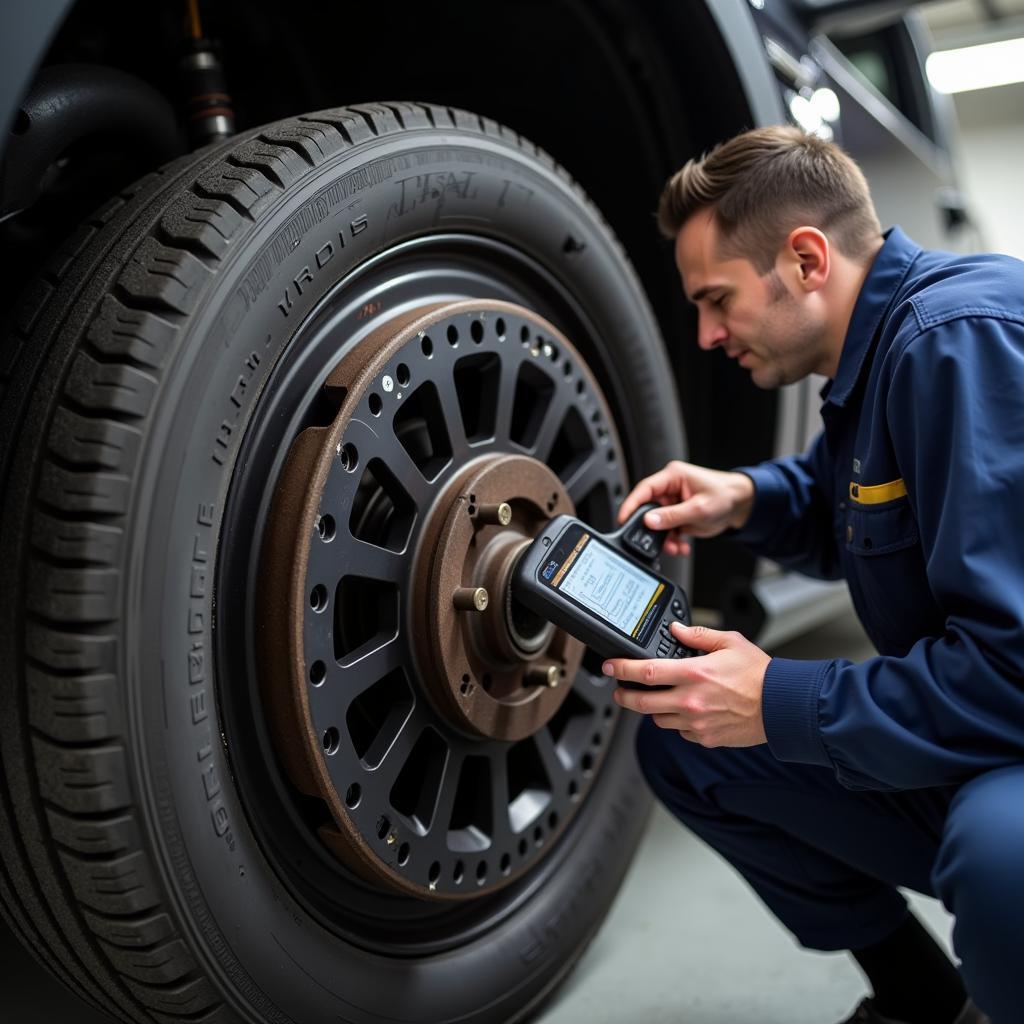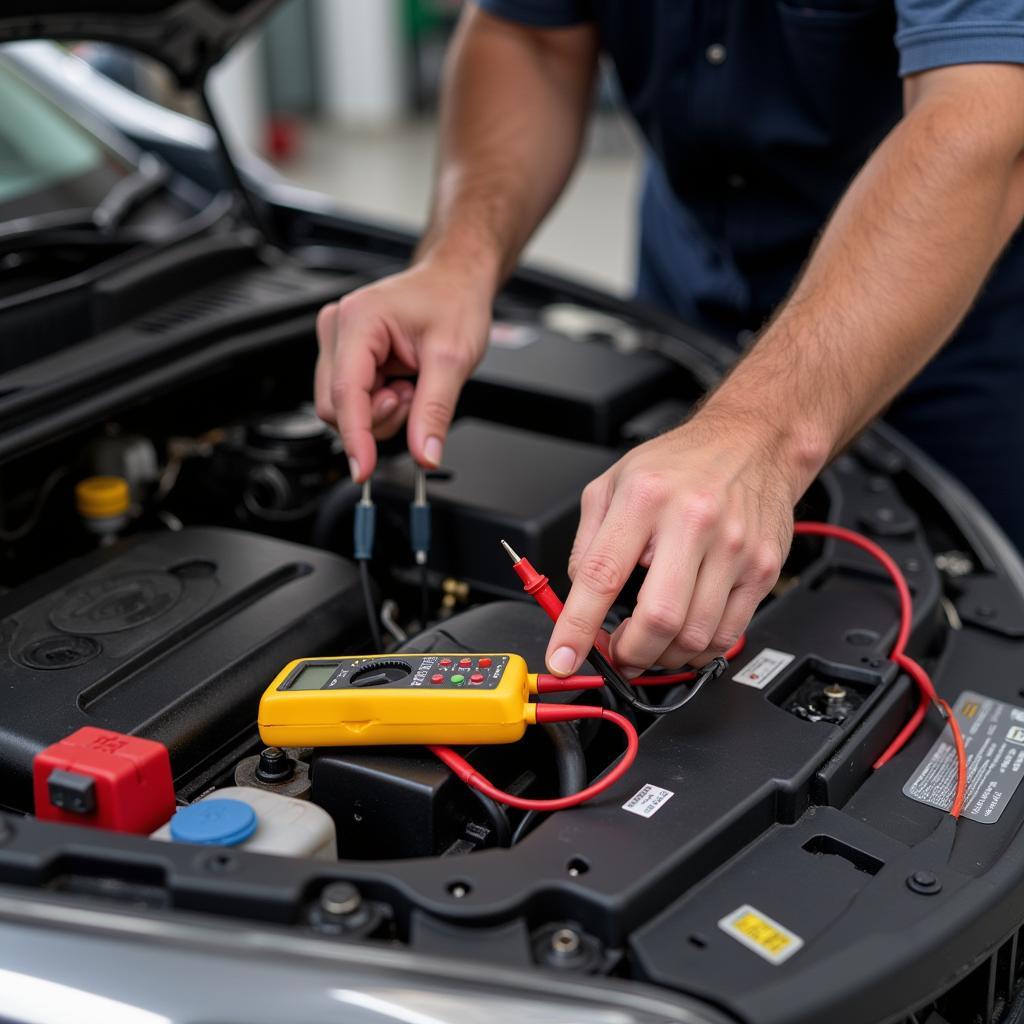The brake warning light on your dashboard is a crucial safety feature, and when it illuminates in your 2009 Mercury Grand Marquis, it’s essential not to ignore it. This light signals a potential problem with your braking system that requires immediate attention. While a simple issue like a disengaged parking brake can trigger the warning, it could also indicate a more serious malfunction.
This comprehensive guide will delve into the common causes behind a brake warning light in a 2009 Mercury Grand Marquis and equip you with the knowledge to diagnose and address the issue, whether it’s a DIY fix or requires professional intervention.
Understanding Your Brake Warning Light
The brake warning light, typically a red circle with an exclamation mark or the word “BRAKE,” serves as your car’s primary communication method for brake system issues. When illuminated, it can indicate several potential problems:
- Engaged Parking Brake: The most straightforward cause is an accidentally engaged parking brake. Always check this first before proceeding with further diagnosis.
- Low Brake Fluid Level: One of the most common reasons for the light to come on is a drop in brake fluid level. Brake fluid is the lifeblood of your braking system, and a leak can significantly compromise your ability to stop effectively.
- Worn Brake Pads: Brake pads are designed to wear down over time. When they reach a critical point, a sensor (if equipped) will trigger the warning light, indicating the need for replacement.
- Faulty Brake Light Switch: The brake light switch, located near the brake pedal, activates your brake lights when you depress the pedal. A malfunctioning switch can disrupt the signal, leading to a lit warning light.
- ABS System Malfunction: While less common, issues within the Anti-lock Braking System (ABS), such as a faulty sensor or control module, can also activate the brake warning light.
 Brake Warning Light Dashboard
Brake Warning Light Dashboard
Diagnosing the Problem: A Step-by-Step Guide
Before taking any action, park your car on a level surface and engage the parking brake.
- Check the Parking Brake: Start by ensuring the parking brake is fully disengaged. If the light remains on after releasing it, move on to the next step.
- Inspect Brake Fluid Level: Locate the brake fluid reservoir under the hood (refer to your owner’s manual). Check the fluid level, ensuring it falls within the “MIN” and “MAX” markers.
- Visual Inspection: Carefully examine the brake lines and hoses connecting to the master cylinder, calipers, and wheel cylinders for any signs of leakage, cracks, or damage.
- Brake Pad Inspection: If you’re comfortable with basic car maintenance, you can inspect the brake pads visually. Look for significant wear or if the pad thickness is nearing the minimum recommended level (consult your owner’s manual).
 Checking Brake Fluid Reservoir
Checking Brake Fluid Reservoir
When to Seek Professional Help
If you’re uncomfortable performing these checks or if your initial inspection reveals any issues, it’s crucial to take your Mercury Grand Marquis to a qualified mechanic specializing in brake repair.
“Attempting to diagnose or repair brake issues beyond your skill level can be dangerous,” cautions John Miller, a certified automotive technician with over 20 years of experience. “Brakes are your car’s most critical safety system, and professional attention is vital to ensure they function correctly.”
Professional Diagnostic Tools: Addressing Complex Issues
Modern vehicles, including the 2009 Mercury Grand Marquis, often require specialized diagnostic tools to pinpoint the exact cause of a brake warning light. Mechanics utilize these tools to:
- Read and Interpret Diagnostic Trouble Codes (DTCs): Stored in the vehicle’s computer, DTCs provide valuable clues about the nature of the problem, such as a faulty ABS sensor or brake light switch.
- Test System Components: Advanced tools allow mechanics to test the functionality of individual components within the brake system, including sensors, solenoids, and the ABS module.
 Mechanic Using Diagnostic Tool
Mechanic Using Diagnostic Tool
Preventing Future Brake Issues: Maintenance is Key
Regular maintenance plays a crucial role in preventing future brake problems and ensuring your safety on the road. Follow these tips to keep your brakes in optimal condition:
- Regular Brake Inspections: Have your brakes inspected by a qualified mechanic at least once a year or every 12,000 miles.
- Timely Brake Fluid Flush: Brake fluid absorbs moisture over time, which can reduce its effectiveness. Flush your brake fluid as recommended by your owner’s manual or sooner if you notice discoloration.
- Quality Brake Parts: When it’s time for replacements, opt for high-quality brake pads, rotors, and other components from reputable brands.
Conclusion
A brake warning light in your 2009 Mercury Grand Marquis should never be ignored. While a simple fix like releasing the parking brake or topping off the brake fluid might resolve the issue, a persistent light requires professional attention. By understanding the potential causes and following the steps outlined in this guide, you can ensure your safety and address brake problems promptly and effectively.


